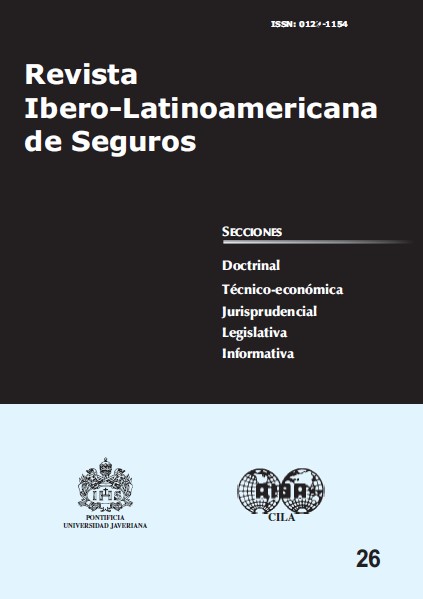Abstract
Securitization is a new method to hedge huge loss exposures of major insurers and reinsurers through insurance policies. Great efforts have been made in order to develop this technique over the last years, as it has made possible for insurance industry both to enhance its international capacity, and to assume risks which were uncoverable in the past. Most insurance life markets’ assets and liabilities, as well as their respective underlying flows (including policies, commissions and reserves), can be securitized. Securitization has turned out to be a valuable source to finance acquisitions and other strategic investments within the context of globalized economy. Life insurance securitization, in particular, has become increasingly attractive for capital markets investors due to the high returns and diversification opportunities involved. Furthermore, it might favour a major change of life insurance business pattern, by turning insurers into intermediaries which subscribe and pack risks before transferring them to the financial markets.
This paper analyses the main life insurance securitization transactions carried out to date, and discusses, from an economic, financial and actuarial focus, the strong properties of securitization in order to help insurers and reinsurers reduce their capital costs and transfer their insured risks, whether traditional or not, to the capital markets.
This journal is registered under a Creative Commons Attribution 4.0 International Public License. Thus, this work may be reproduced, distributed, and publicly shared in digital format, as long as the names of the authors and Pontificia Universidad Javeriana are acknowledged. Others are allowed to quote, adapt, transform, auto-archive, republish, and create based on this material, for any purpose (even commercial ones), provided the authorship is duly acknowledged, a link to the original work is provided, and it is specified if changes have been made. Pontificia Universidad Javeriana does not hold the rights of published works and the authors are solely responsible for the contents of their works; they keep the moral, intellectual, privacy, and publicity rights.
Approving the intervention of the work (review, copy-editing, translation, layout) and the following outreach, are granted through an use license and not through an assignment of rights. This means the journal and Pontificia Universidad Javeriana cannot be held responsible for any ethical malpractice by the authors. As a consequence of the protection granted by the use license, the journal is not required to publish recantations or modify information already published, unless the errata stems from the editorial management process. Publishing contents in this journal does not generate royalties for contributors.


